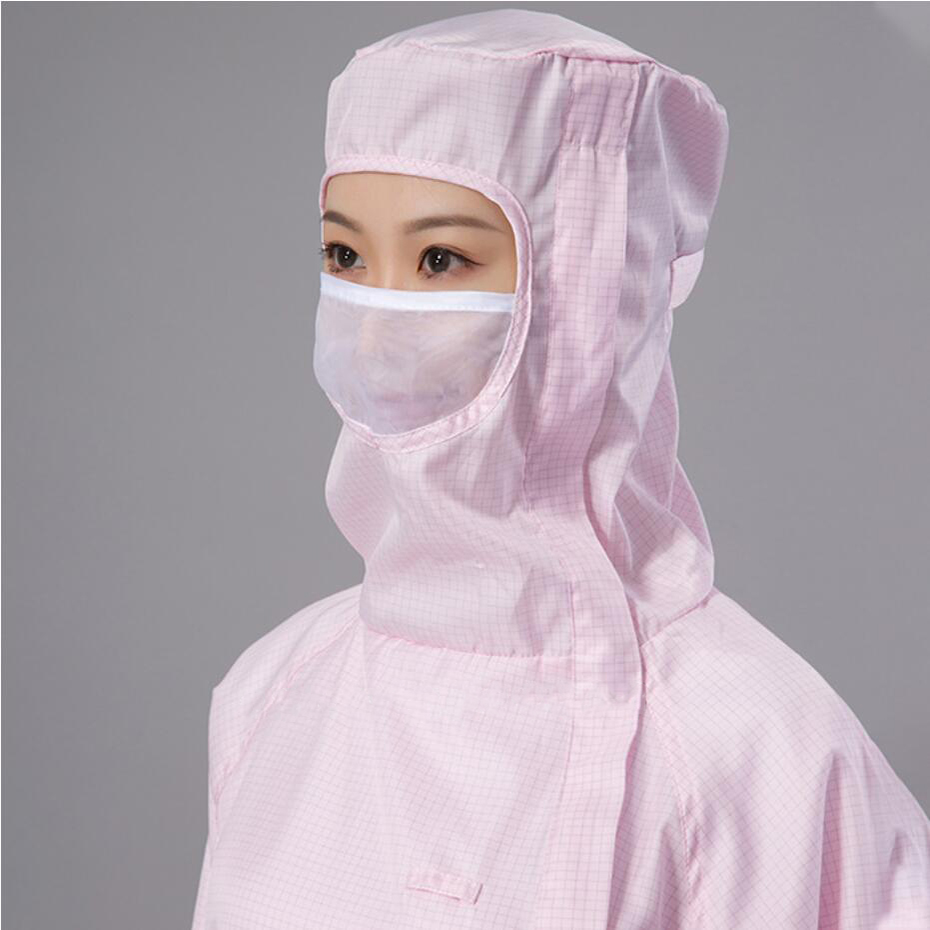La contaminazione delle camere bianche è un problema comune affrontato da molti produttori asettici per molte ragioni. Sfortunatamente, la causa principale più comune sono gli operatori che lavorano in queste camere bianche. Perché?
Innanzitutto, le persone rappresentano la prima grande fonte di contaminazione del processo di produzione farmaceutica.

- I principali rischi della produzione farmaceutica sono la contaminazione, la confusione e gli errori
- I fattori di rischio della produzione farmaceutica comprendono endogeni ed esogeni.
- I fattori endogeni includono impianti, attrezzature, sistemi, qualità delle materie prime e sussidiarie, processo.
- I fattori esogeni includono i rischi causati dal personale.
- Alcuni dicono che il rischio asettico, i microrganismi sono la prima fonte di contaminazione. Questo è sbagliato, i microrganismi sono la prima contaminazione, ma non la prima fonte di contaminazione. Tra i vari rischi, i fattori di rischio umano sono particolarmente importanti, tra cui il livello di carica batterica del personale, il tempo trascorso dal personale nell'area pulita, la frequenza dell'impatto della carica batterica del personale, il coefficiente di trasferimento. Il coefficiente di trasferimento rappresenta la carica batterica nel prodotto e indica anche la probabilità che i microrganismi entrino nel prodotto.
- The plant, equipment, systems, raw and auxiliary material quality, processes, etc. have been audited, validated, verified by suppliers, and …… should be well controlled. The next step is the management, control, and maintenance of the plant, equipment, systems, raw and auxiliary material quality, and processes by the personnel. The main principle of GMP implementation is to reduce contamination, confusion, and errors, and in the production process, the vast majority of contamination, confusion, and errors of the root cause, are due to the human factor.
- Quindi: le persone sono la prima grande fonte di inquinamento nella produzione dei farmaci.
In secondo luogo, i fattori di rischio portati dal personale.

- Scarsa consapevolezza della qualità e qualità generale del personale stesso
- Cattive abitudini igienico-sanitarie del personale stesso
- Le condizioni di salute del personale non sono buone
- The personnel’s speech and behavior is not standardized
- Low production operation skills of personnel
- Dressing procedures do not guarantee the pollution of the environment by the personnel
- Not strictly in accordance with the dressing procedures for dressing
- Operators do not wash their hands and disinfect their hands as required
- Hardware protection measures can not prevent the pollution brought by the personnel themselves
- Too many people in the clean area
- Clean area personnel action too much, too tedious
- The magnitude of the operator’s movement is too large to bring particle contamination
- Particle contamination caused by the rapid movement of personnel
- Particle contamination caused by personnel talking loudly, sneezing, etc.
- Through the aseptic production area purification dead-end and contaminated
- Staying in a class a clean area for too long
- Improper operation leads to environmental, equipment, drug contamination
- Human surface metabolism brings particles and microbial contamination
- Contamination, confusion or error caused by not operating according to sop, mishandling and the risk of clothing itself
Third, the risk factors brought by cleanroom attire.

- Workwear style is not correct, easy to hide dirt and grime
- Material performance (weave characteristics, fiber type, sterility, anti-static, etc.) is not appropriate
- The material is too thin, the isolation effect is not good, can not block the pollutants
- Material is not good, more shedding itself
- The material is too dense, breathability is not good
- Model selection does not match, too tight personnel discomfort, too loose pollution is easy to spread
- incorrect operation in the process of dressing human contamination sterile clothing
- Ambient air pollution sterile clothing
- Dressing process careless ground contamination sterile clothing
- Clothes will be shed after multiple sterilizations
- Workwear rupture cannot block human contamination
- Work clothes sterilized by secondary contamination
- The personnel in and out of the worn, not worn work clothes confusion caused by cross-contamination
- The gloves are too loose or too tight, which brings contamination during operation
- No regular hand disinfection
- The mask is too loose, the mouth contaminants into the environment
- The mask is too tight and too dense, the operator does not breathe well. The risk brought by the personnel, the risk brought by the work clothes is clear, the preventive measures are self-explanatory, the key or the training and management of people must be in place.
Fourth, the management of personnel and team management.

- GMP regulations, guidelines for the implementation of all rely on people to implement, people are the most critical.
- No matter which country’s GMP audit, the first concern is the personnel qualifications and quality management system.
- There must be a good management system.
- There must be a group of highly qualified personnel.
- There must be a proper workflow and operational sop.
- The scope of each person’s responsibilities must be clear.
- Each person must have a good code of conduct and a wealth of expertise.
- Good personal habits, efficient execution.
- Quality control of the whole process.
- Quality management, the key also lies in the management.
- Management, good management of people, good management of things.
- Training: mainly the change of concept
- Training: mainly the formation of habits
- Cooperation: between departments, between each person within the department, relying on communication to solve problems.
- Participation: between the upper and lower levels is not just command and execution, but more participation and advice.
- Support: Support each other.
- Review and feedback.
- Every day, what is each person doing?
- Everyone needs to be clear on how and why they are doing it
- Commissioning, trial run, trial production, culture filling, these processes are the process of training and practice.
- Good rules and regulations, operation sop, strict enforcement.
- GMP should be a self, consciously good habits.
How to control people Contamination in cleanrooms



- People as the source of environmental pollution include their own: hair, skin and other micro-debris, body surface and breathing metabolic products. Personnel carry: various particles and microorganisms attached to the human body, clothing, etc., as well as clothing wear off. These two types of contamination are constantly being generated and spread. Cleanroom operators are the largest source of contamination.
- In a class B clean room, an operator sitting still can release 100,000 to 1 million particles per minute, and a single movement of the hand or head can produce 0.3 um of particles. It will produce 0.3 um of dust about 500,000 particles, the feet move is 1.5 million particles, walking will cause 5 million particles, and fast walking generates 10 million particles. All of these particles come from necrotic hair and shed skin. Other sources of particles are hair spray, cosmetics, hair coloring and exposed non-clean clothing. As you can imagine, this is a huge and deadly contamination for a very demanding sterile area.
- Therefore, it is not enough to control the temperature and humidity in the clean area, but the key is to control the cleanliness. The key to control the cleanliness is to prevent contamination and human contamination, in addition to air filtration.
- The particles in the clean area will increase with the activities of operators, and the air conditioning system and machine operation will also produce particles by continuous vibration. Ordinary clothes, even when wrapped in clean clothes, can add millions of particles to a clean room. In a clean room with a very high level of cleanliness, the operators should only wear clothes that are made of non-shedding material and are tightly woven. Also, sterile underwear is required in sterile areas.
- The human breath contains a large amount of particulate pollution, and each exhalation expels a large amount of water vapor and particulates into the air.
- A smoker’s breath can continuously exhale millions of particles long after smoking.
- Healthy people are a source of many pollutants, and sick people are even worse, especially those with skin rashes and respiratory infections.
- Patients with respiratory tract infections are additional sources of contamination. The only viable way to prevent contamination of people is to completely encase them in layers.
- The material used for clean suits varies depending on the cleanliness requirements, and should be resistant to shedding and contain conductive fibers to discharge static electricity.
- The material’s ability to filter particles and the operator’s comfort in wearing it should also be examined. Every part of the body should be covered. The head should be covered with an inner cap to cover the hair.
- The eyes are also a major source of liquid particles, and in areas where contamination control is important, the operator wears a full shield that completely covers the head and face.
- The head and face can be completely covered. Fully covered body garments that cover the legs, arms, and neck, and better designed work clothes that cover the zipper as well.
- No outside pockets are allowed. The feet are also covered with shoe covers, and some have leg guards attached to the calves. Hands should be covered with at least one pair of gloves.
- Even two pairs of gloves are required for sterile areas. Skin shedding is further controlled with a special emollient that moisturizes the skin, but it must not contain salt or chloride.
- However, it should not contain salts or chlorides. The order of dressing should be from the head down, so that the dust raised in the previous step can be covered by the next part of the
- This allows the dust raised in the previous step to be covered by the next part of the garment, and the gloves to be put on last. In the case of one-piece overalls, sometimes they can only be worn from the bottom up, with the feet and legs first and the arms and head last.

- Extra care should be taken at this point. Clean clothing and wearing procedures to control contamination from personnel are well known, but the most effective prevention
- means is the training, training and retraining of operators, and the implementation, implementation and implementation. In the cleanroom, the people are an important factor in determining the generation of particulate contamination. All personnel working in a cleanroom should be fully aware of the impact of personal hygiene habits on cleanliness.
- Only by knowing clearly what they are doing can they avoid the pollution they bring to the clean environment and even to the drugs.
- Jewelry is not allowed in clean areas, especially rings with sharp corners or edges, as they may pierce gloves or clothing. Do not wear earrings, necklaces, brooches and other protruding or dangling jewelry. Personal items, such as cigarettes, wallets, tissues, paper products, cell phones …… should be stored in a desk or locker and not brought into the cleanroom. In the cleanroom, all clothing pockets must be empty.








